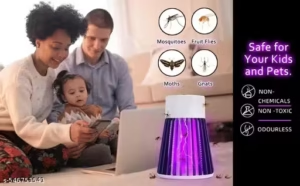
LifeBridge Health, Based in Owings Mills, Maryland, Faced Two Primary Telemedicine Challenges: Improving Operational Efficiency and Increash Patint Adoption.
Please Unblock add blocker
The challenge
Dr. Jonathan Thierman, President and Chief Executive, ExpressCare and Children’s Urgent Care, At LifeBridge Health, Previous Had Set Up the LifeBridge Heldege Health Center. From that experience he knew An Efficient Telemedicine Operation Would Reduce Friction for Patients, Making it Easier for them to Adopt the new process.
However, in the Urgent Care Setting, He Saw That Few Patients We Using Telemedicine and that Wait Times Wey Far Too long.
Beyond these primary challenges, the health system It Explred Multiple Telehealth Platforms, Each offering a range of features. Ultimately, it found the most important capability was there that that is tightly integrated the platform into patients and provider workflows.
Proposal
“We operate a highly efficient network of Nearly 35 Urgent Care Centers Across Maryland,” Thierman said. “One key to our efficiency is our ‘cut-me-paste’ approach-Ensuring Every Detail, From Supplies and Facility Layout to Workflow and Staffing, is conn as help Locations.
“This Standardization Allows Us to Identtify INFFICINCES Once and Implement Solutions Systemwide,” He Continued. “It also also gives us flexibility in staffing, enabling provides and medical assistants to seamlessly transition between centers without disruption.”
Through this approach, Staff Identified A Significant Inefficiency: The Occasional Telemedicine Visit Inserted Inserted Inserted into a Provider’s in-Person Workflow. These visits disrupted the standard process, creating bottlenecks and making wait times unpredent for telemedicine patients.
Often, virtual patients were left waiting in their “virtual Room” while the provider focused on in-appearson care, unintensively deparitizing them simply being they “out of Sight, Oout of Sight, Oout of Mind.
“To address this, we created a standalone ‘Telemedicine Site’ that Functions Like an independent center withbin our network,” Thierman explained. “This new center operates with its own p & l, dedicated staff and schedules. Registration, billing and other processes mirror theaose of our physical center to maintenance.
“By Consolidating Telemedicine Workflows Into A Single, Specialized Center, We Aimed to Eliminate INFFCINCIES, Improve Patient Throughput, And, Ultimately, Increase Telemedicine Adoption, “He Added.
Meeting the challenge
For the Telemedicine Site, LifeBridge Health Followed The Same Process it has used to set up new locations in the past. It hired new staff and providers and instablelyed business operations, workflow patterns, and front- and back-end processes to match theSe of the posical sites as closely as plaise.
“On our website and scheduling platforms, we cleared designated ‘Telemedicine’ as a new location, making it easy for patients to select a virtual visit instead of an in-son appointment,” Explained. “For Simplicity and Integration, We Opted to Use the Basic Built-in Telemedicine Platform Within Our Ehr, Experity.
“For a brief period, we collaborated with the platform’s parent company to experience with additional features and enhancements,” He continued.
“However, we ultimately determined a streamlined approach was best, minimizing potential complications. Patients and staff was alredy family with for scheduling appointments. “
Results
Almost overnight, Telemedicine Patient Volume Doubled With the Launch of the Virtual Center. Within a few months, it had tripled. At the same time, lifebridge health significantly reduced wait time and improved patient throughput, creating a highly efficient system with exceptional patience, thierman noted.
“Our new virtual urgent care center offered extramely short wait and allowed provides to see nearly twice as many patients as they are in the same period for in-Person Visits,”
“As a result, when we measured patient satisfaction scores – sometinely do for all our locations – the telemedicine center’s scores were scores. Volumes while MainTaining High Through Throughput and Patient Satisfaction Metrics.
“We recognized the future of urgent care would include Virtual encounters and telemedicine visitsWhether we provided the service or someone else did, “He continued.” INTEAD OF WORRINT CANNIBALZING our own business, we focused on delivering the best telemedicine experience
While Revenue Per Telemedicine Visit was Lower Than For In-Person Visits, The Reduced Overhead and Infrastructure Costs-Combined with the ability to see more patints per hour-resulted in strings for Business line after transitioning to the virtual center model. “
Follow Bill’s Hit Coverage on LinkedIn: Bill Siwicki
Email him: bsiwicki@himss.org
Healthcare it news is a Himss Media Publication.
Watch Now: Tech Boots Long-Term Care Communication and Administrative Processes


